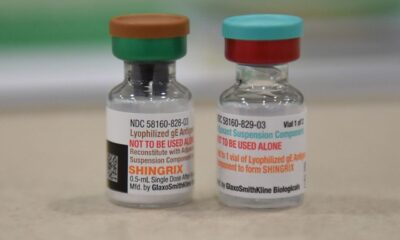Technology
Digital Divide Leaves Seniors Struggling to Access SNAP Benefits

As the recent government shutdown concludes, challenges persist for the Supplemental Nutrition Assistance Program (SNAP). Many eligible seniors continue to face barriers that prevent them from accessing vital food assistance. The shift to a predominantly digital application process is particularly problematic for older adults, many of whom lack the necessary technology skills or internet access.
Approximately 13 million seniors qualify for SNAP benefits, yet fewer than 4 million actually receive them. This discrepancy highlights the impact of the digital divide, which disproportionately affects older populations. The enrollment process for SNAP, the largest federal nutrition program, increasingly requires online applications, leaving many seniors struggling to navigate a system designed with digital access in mind.
New Eligibility Rules and Increased Requirements
Starting on November 1, 2023, new eligibility rules have expanded work requirements to include previously exempt groups, such as parents with teenagers and adults up to age 65. As seniors attempt to renew their benefits, they face additional procedural hurdles, including new documentation requirements that often must be submitted online. In response to this shift, states and the federal government have invested $1.15 billion since 2021 to digitize SNAP administrative systems. Currently, 49 states offer mobile-optimized websites, 11 have smartphone applications, and 25 use text messaging for case management.
While some states allow phone interviews as an alternative to in-person appointments, this accommodation only addresses part of the application process. Seniors still encounter significant barriers when it comes to completing online applications or uploading documents, often locking them out of the support they desperately need.
Challenges in Rural Areas
The difficulties are particularly pronounced in rural areas, where seniors face a higher aging population and greater digital access issues. According to a recent analysis from the Food Research & Action Center, 85% of counties with the highest food insecurity rates are rural. Seniors in these areas often lack reliable internet access, and the advice to use public library computers is not always practical. Many rural libraries operate with limited hours and staffing, making consistent digital support hard to come by.
The gap in access to SNAP benefits is further illustrated by comparing states. California, which boasts a comprehensive suite of SNAP mobile technology, has consistently ranked low for senior participation. In contrast, Massachusetts has implemented effective strategies, increasing its senior participation rate from 16% to 67% by adopting high-touch solutions, including phone interviews and statewide call centers.
These disparities have significant financial implications. As Medicare expands food-as-medicine initiatives, the digitization of SNAP risks locking seniors out of essential nutrition. When seniors lose access to food and subsequently require emergency medical care, the financial burden shifts to Medicare, which incurs substantial costs for hospitalizations and outpatient services.
Researchers argue that the Centers for Medicare & Medicaid Services (CMS) should mandate that any state receiving federal funding for medically tailored meal programs demonstrate alternative pathways for basic food assistance. This could include phone-based intake systems where trained case managers assist seniors in accessing digital portals. Such a requirement would ensure that federal healthcare funds are not used to create programs that exclude those most in need.
The principle of accessibility must be prioritized. Access to basic nutrition should not depend on an individual’s digital literacy or access to technology. The successful Massachusetts model demonstrates that creating supportive infrastructures can effectively bridge the access gap for seniors.
In conclusion, as policymakers strive to treat food as medicine, it is essential to ensure that all seniors can access both medical nutrition interventions and basic food assistance. Otherwise, the system risks establishing healthcare programs that inadvertently marginalize those who require support the most. The digital divide should not dictate the availability of essential services, and proactive measures are necessary to prevent further exclusion of vulnerable populations.
-

 Technology5 months ago
Technology5 months agoDiscover the Top 10 Calorie Counting Apps of 2025
-

 Health3 months ago
Health3 months agoBella Hadid Shares Health Update After Treatment for Lyme Disease
-

 Health3 months ago
Health3 months agoErin Bates Shares Recovery Update Following Sepsis Complications
-

 Technology4 months ago
Technology4 months agoDiscover How to Reverse Image Search Using ChatGPT Effortlessly
-

 Technology1 month ago
Technology1 month agoDiscover 2025’s Top GPUs for Exceptional 4K Gaming Performance
-

 Technology3 months ago
Technology3 months agoElectric Moto Influencer Surronster Arrested in Tijuana
-

 Technology5 months ago
Technology5 months agoMeta Initiates $60B AI Data Center Expansion, Starting in Ohio
-

 Technology5 months ago
Technology5 months agoRecovering a Suspended TikTok Account: A Step-by-Step Guide
-

 Health4 months ago
Health4 months agoTested: Rab Firewall Mountain Jacket Survives Harsh Conditions
-

 Lifestyle5 months ago
Lifestyle5 months agoBelton Family Reunites After Daughter Survives Hill Country Floods
-

 Health3 months ago
Health3 months agoAnalysts Project Stronger Growth for Apple’s iPhone 17 Lineup
-

 Technology4 months ago
Technology4 months agoHarmonic Launches AI Chatbot App to Transform Mathematical Reasoning




















